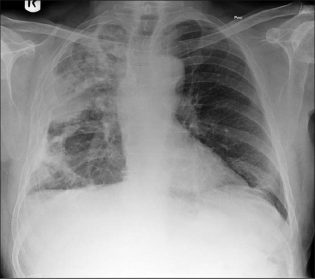Pleural Mesothelioma (Pleural cancer)
What is pleural mesothelioma?
— Pleural mesothelioma is a rare type of cancer that happens in the thin layer of tissue around the lungs. This tissue is called the “pleura”.
Pleural mesothelioma is a very serious illness that gets worse over time.
People who get pleural mesothelioma are usually older than 50. It is almost always caused by being around a mineral called “asbestos.” Asbestos used to be common in insulation, ceiling tiles, car brakes, and many other materials. It is made up of very small fibers. If these fibers get into the lungs, they can cause serious health problems.
Since the 1970s, people have mostly stopped using asbestos. That’s because scientists learned that being around asbestos (“asbestos exposure”) can cause problems, including pleural mesothelioma. These problems might not happen until many years after a person is around asbestos. If you were around asbestos in the past, you could be at risk for pleural mesothelioma.
What are the symptoms of pleural mesothelioma?
— The main symptoms include:
- Shortness of breath – You might feel like you can’t get enough air or have to work harder than usual to breathe.
- Chest pain
Having these symptoms does not mean you have pleural mesothelioma. Many common conditions cause shortness of breath and chest pain. Most of these conditions are much more common than pleural mesothelioma.
Should I see a doctor or nurse?
— Yes. If you have shortness of breath, see your doctor or nurse. If you have chest pain or a lot of trouble breathing, you need to go to the hospital. Those symptoms could mean that your condition is serious.
Will I need tests?
— Yes. Your doctor or nurse will do an exam and learn about your symptoms. You might have some or all of these tests:
- Chest X-ray and other imaging tests – These might include a CT scan, PET scan, or MRI. All these tests create pictures of your lungs and the area around them.
- Breathing tests – In these tests, you breathe hard into a tube. The tests show how well your lungs are working.
- Bronchoscopy – A doctor uses a thin tube (called a “bronchoscope”) to look inside your airways.
- Biopsy – A doctor takes a small sample of tissue from the pleura or the space between your lungs. Another doctor looks at the sample under a microscope to check for mesothelioma.
How is pleural mesothelioma treated?
— Doctors cannot always get rid of pleural mesothelioma. But they can give treatments that might help you breathe better or have less pain. These include:
- Surgery – Many people with pleural mesothelioma are not healthy enough for surgery, but a few people are. During surgery, doctors might:
- Take out some (or all) of the tissue that has mesothelioma.
- Drain fluid from around the lung
- Put a powdery substance called “talc” in the space around the lung. This can help keep fluid from building up there.
- Radiation therapy – Radiation kills cancer cells.
- Chemotherapy – Chemotherapy is the medical term for medicines that kill cancer cells or stop them from growing.
Some people have a combination of treatments. For example, you might have radiation treatment or chemotherapy after surgery. The best treatment for you will depend on your age, health, and other symptoms. Your doctor or nurse will talk with you about the best treatment.

